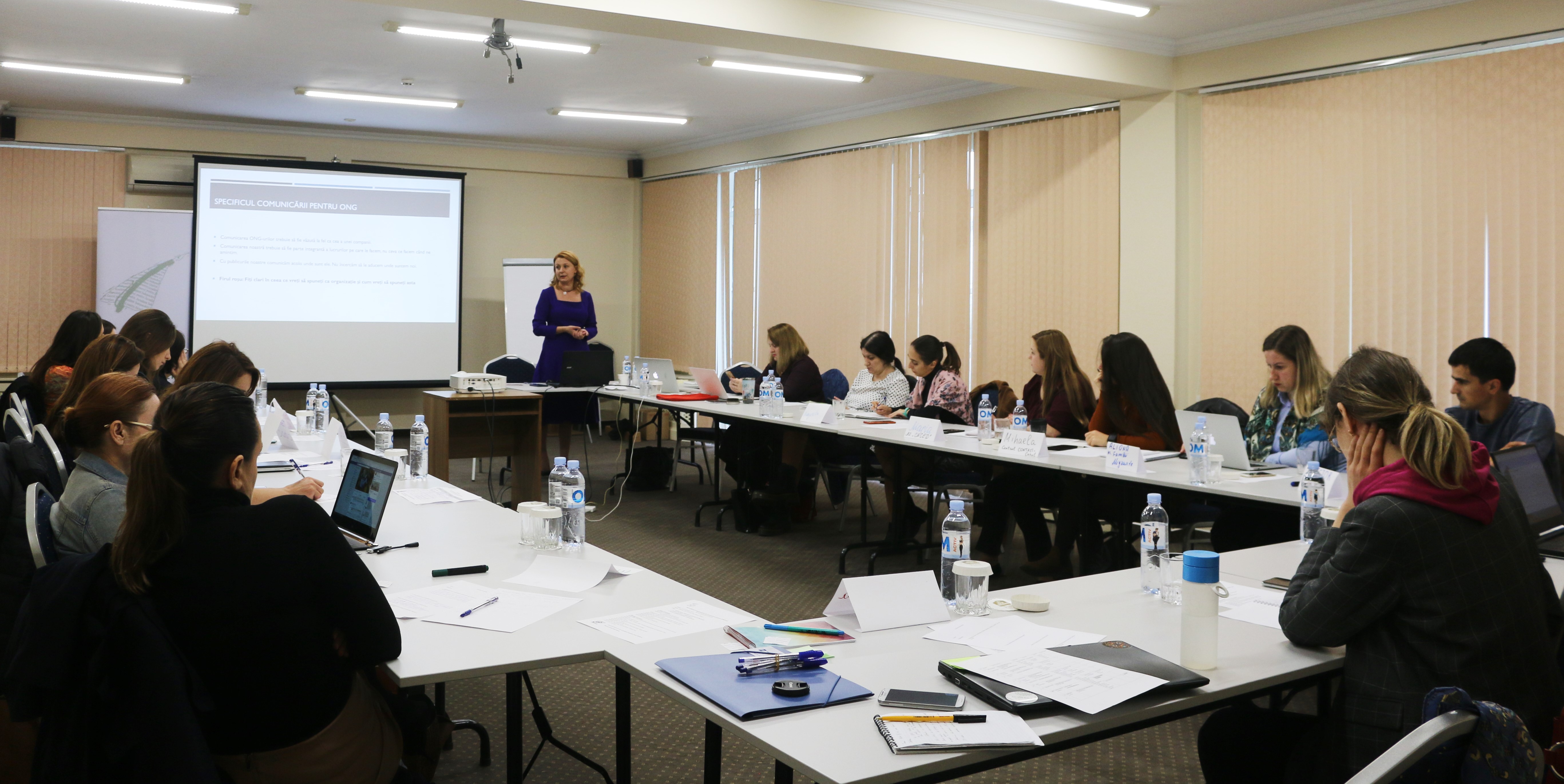
At the beginning of the training, Ina Grejdeanu, IJC Deputy Director for Strategic Development, stressed the need of effective communication for NGOs and mentioned that ‘we can be the best organization in our field of expertise, but if we fail to communicate effectively about our activities and results, this will remain unknown to the audience.’
Cristina Lupu urged participants to persuade their colleagues not to underestimate the role of communication. ‘An NGO must gain its place on the market. We cannot afford to be different from companies,’ she warned. Given that most of organizational communication is done separately for each project, the trainer recommended to communicators to find the ‘golden thread’ that reflects the institution’s vision and ensures consistency and continuity of messages. In this case, a well thought communication strategy would gather all various segments under one umbrella.
In her turn, Sorina Stefarta advised communicators to avoid technical language and to use brief headlines in their materials, of up to two lines. The communicator also urged them to collaborate with bloggers, vloggers and influencers, local media, and to use new communication networks, such as Instagram, WhatsApp or Telegram. Organizations must conduct unusual events, in order to ensure media presence at civil society’s events.
Ludmila Andronic explained to the audience the structure of a communication strategy. Her key words were: mission, vision and values. In her opinion, these concepts need to be formulated clearly and concisely, and must be stated on the organization’s website and in its strategies. An inspirational resource in this regard can be the site topnonprofits.com. Defining the target audience, which can help organizations to adjust appropriately their messages, is another key element of the strategy.
‘A communicator has as much power and influence as he or she is able to achieve,’ said Ludmila Andronic.
The training will be followed by an in-house consultancy program, during which four NGOs will be helped to develop or update their communication strategies.
The training is organized under ‘Strengthening the capacities of civil society organizations through the professional development of their communicators’ project, implemented by the Independent Journalism Center with the support of Soros-Moldova Foundation.















